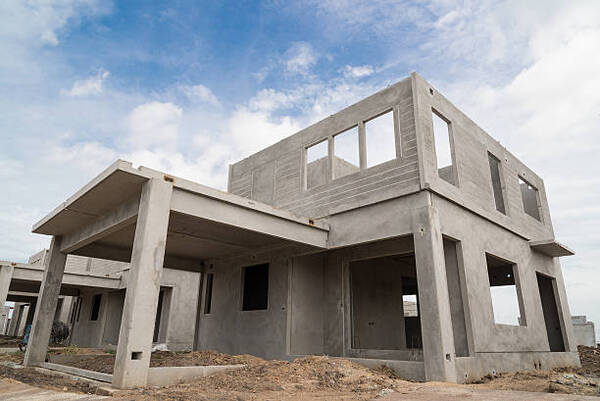
Unraveling the Cost Dynamics of Innovative Construction Materials
The construction sector is experiencing a noteworthy shift driven by advancements in materials and technology. Professionals like builders, architects, and engineers are continuously exploring fresh approaches to create buildings that are not only safer and more environmentally friendly but also economically efficient. Leading this transformation are innovative materials, which offer a multitude of advantages, such as improved structural integrity and energy efficiency. Nevertheless, despite their potential to revolutionize the construction industry, these materials often bring about distinct financial considerations that can significantly impact project budgets. In this article, we will venture into the realm of cutting-edge construction materials, examine their distinctive characteristics, and assess the financial implications associated with their adoption.
The Role of Innovative Materials in Construction
The drive for innovation in construction materials stems from the pressing need for more sustainable and efficient building practices. These groundbreaking materials aim to address a variety of challenges encountered by the construction industry, which include:
Sustainability: As environmental concerns continue to grow, the construction industry is seeking sustainable alternatives to traditional materials. Innovative materials often prioritize sustainability by using recycled or renewable resources.
.jpg)
Strength and Durability: Building structures must withstand a range of forces, from gravitational loads to natural disasters. Innovative materials offer enhanced strength and durability, resulting in buildings that last longer and are safer.
Energy Efficiency: Energy-efficient construction materials can reduce a building's operational costs by minimizing heating, cooling, and lighting expenses. This leads to lower energy bills and a reduced carbon footprint.
Reduced Maintenance: Many innovative materials demand less maintenance throughout their lifespan, saving both time and money. The reduction in maintenance expenses is especially noteworthy for large-scale construction projects.
Aesthetic Appeal: Innovative materials often offer unique design possibilities, enabling architects and designers to create visually stunning and iconic buildings.
Nonetheless, it's important to acknowledge that these advantages come with associated costs, which can vary depending on the specific material and its intended application. Let's now explore some of the most influential innovative materials in construction and delve into the financial implications they entail:

Carbon Fiber Reinforced Polymers (CFRPs): Pushing Boundaries with Strength and Lightness
Carbon Fiber Reinforced Polymers, or CFRPs, are a group of materials known for their remarkable strength-to-weight ratio. They consist of carbon fibers embedded in a polymer matrix. CFRPs are commonly used to reinforce structures in the construction industry, offering significant advantages such as high tensile strength, corrosion resistance, and reduced weight.
Cost Implications:
Initial Costs: CFRPs are generally more expensive than traditional steel reinforcement. The initial investment in CFRPs can be a substantial part of the project budget.
Long-Term Savings: While the upfront cost is higher, CFRPs can lead to substantial long-term savings by reducing maintenance expenses and extending the lifespan of structures.
Weight Reduction: The lightweight nature of CFRPs can also lead to savings in transportation and installation costs.

Cross-Laminated Timber (CLT): Embracing Sustainability with Structural Finesse
Cross-Laminated Timber, or CLT, is an innovative wood product that has gained popularity in construction for its sustainability and structural benefits. CLT panels are made by gluing layers of wood together at right angles, creating a strong and versatile building material.
Cost Implications:
Material Costs: The cost of CLT can vary depending on the region's timber availability. In areas with abundant wood resources, CLT can be cost-competitive with conventional materials.
Reduced Labor Costs: CLT construction can be faster than traditional methods, leading to lower labor costs and quicker project completion.
Sustainability Benefits: The use of sustainable materials aligns with green building practices and can enhance a project's reputation and long-term value.

High-Performance Concrete (HPC): Engineering Excellence for Resilient Foundations
High-Performance Concrete, or HPC, is engineered to offer superior durability, strength, and resistance compared to traditional concrete. It often incorporates specialized ingredients and precise manufacturing techniques.
Cost Implications:
Higher Initial Cost: HPC typically has a higher upfront cost due to the use of specialized ingredients and manufacturing processes.
Long-Term Savings: The durability and reduced maintenance requirements of HPC can lead to cost savings over the life of a building.
Enhanced Structural Performance: HPC's superior strength can enable the use of smaller structural elements, potentially reducing material and labor costs.
Smart Materials: Fusing Intelligence with Construction
Smart materials are designed to respond to external stimuli, such as temperature, humidity, or mechanical stress, in specific ways. They can have a transformative impact on construction by offering enhanced functionality and energy efficiency.
Cost Implications:
Initial Investment: Smart materials often come with higher upfront costs due to the incorporation of advanced technologies.
Energy Efficiency: The long-term benefits of smart materials include reduced energy consumption, resulting in lower operational costs.
Maintenance Reduction: Some smart materials, like self-healing concrete, can reduce maintenance costs by repairing minor damage automatically.

Solar Tiles and Panels: Harvesting Energy from the Sky
Solar-integrated roofing materials, such as solar tiles and panels, are prime examples of how innovation can contribute to sustainable construction. These materials allow buildings to generate their electricity, reducing dependence on traditional power sources.
Cost Implications:
Higher Initial Cost: Solar roofing materials are typically more expensive than traditional roofing materials.
Energy Savings: Over time, the electricity generated by solar tiles and panels can offset their initial cost, leading to significant long-term savings.
Environmental Benefits: Solar roofing materials contribute to reduced greenhouse gas emissions and environmental sustainability.

Recycled and Sustainable Materials: Nurturing the Environment, One Structure at a Time
The use of recycled and sustainable materials is on the rise in construction. These materials include reclaimed wood, recycled steel, and products made from renewable resources, such as bamboo.
Cost Implications:
Varied Costs: The cost implications of recycled and sustainable materials can vary widely. Some may be cost-competitive with traditional materials, while others may have a premium.
Local Availability: The cost-effectiveness of these materials is often influenced by their local availability and sourcing.

3D-Printed Construction: Building the Future Layer by Layer
3D printing technology is gaining traction in construction for its potential to reduce labor costs and accelerate project timelines. 3D printers can create building components with precision and speed.
Cost Implications:
Investment in Equipment: The initial investment in 3D printing equipment can be substantial.
Labor Savings: 3D printing can significantly reduce labor costs, particularly for projects that involve complex or repetitive elements.
Construction Time: Faster construction times can lead to savings in terms of project management and overhead costs.

Nano-engineered Materials: Unlocking the Potential of Nanotechnology
Nano-engineered materials are engineered at the nanoscale, offering unique properties like enhanced strength, insulation, and resistance to environmental factors.
Cost Implications:
Varied Costs: The cost of nano-engineered materials can vary depending on the specific application and manufacturing process.
Long-Term Benefits: These materials are often considered for their long-term benefits, such as increased energy efficiency and reduced maintenance costs.
Biodegradable and Bio-based Materials: Nature's Blueprint for Sustainability
Biodegradable and bio-based materials align with sustainability goals by using renewable or biodegradable resources. They include materials like bioplastics and bio-based composites.
Cost Implications:
Varied Costs: The cost of biodegradable and bio-based materials can vary widely depending on the specific material and its production scale.
Sustainability: Using these materials can contribute to a project's overall environmental sustainability.
Prefabricated and Modular Construction: Constructing Efficiency, One Module at a Time
Prefabricated components and modular construction techniques are gaining popularity for their potential to reduce labor costs and construction time. These methods involve manufacturing building elements off-site and then assembling them on-site.
Cost Implications:
Design and Manufacturing Costs: There can be higher upfront costs related to design and manufacturing processes.
Labor Savings: Prefabrication and modular construction can significantly reduce on-site labor costs, streamline project schedules, and minimize waste.
Factors Influencing Cost Implications
Several critical factors influence the cost implications of using innovative materials in construction:
Location: The Influence of Locale
Local availability of materials can significantly impact costs. Materials that are readily accessible in one region may incur substantial expenses when transported to another.
Regulations: Navigating Compliance
Local building codes and regulations play a pivotal role in determining the feasibility and cost of using certain materials. Compliance with these regulations can lead to additional expenses but is essential for ensuring structural integrity and safety.
Economies of Scale: Scaling Towards Affordability
The cost of innovative materials often decreases as production scales up. Large-scale adoption in the industry can lead to cost reductions over time, making these materials more accessible and cost-effective.
Project Requirements: Tailoring Solutions to Needs
The unique demands of a project will dictate the most suitable materials. Factors such as load-bearing capacity, insulation needs, and aesthetic preferences all contribute to the selection process.

Paving the Path Towards a Sustainable Future in Construction
Innovative construction materials shine as a guiding light, illuminating the way toward a more sustainable, efficient, and resilient built environment. Although they may initially require higher investments compared to their traditional counterparts, the enduring advantages of reduced maintenance, heightened durability, and enhanced sustainability often eclipse these upfront expenses. As we find ourselves at the threshold of a new era in construction, the incorporation of innovative materials is set to redefine how we construct and shape our world for generations to come.
This journey towards innovation signifies a collective commitment to building responsibly and ushering in a new age where structures are not only robust and cost-effective but also kinder to the planet. Ultimately, it is through our understanding and embrace of innovative construction materials that we chart the course toward a more environmentally conscious and prosperous future in construction.
Check https://app.bidlight.com for how BidLight can help you estimate your BIM model!